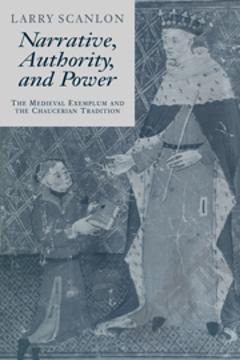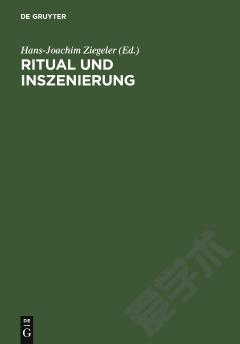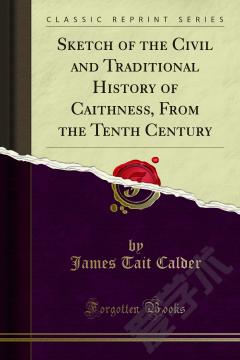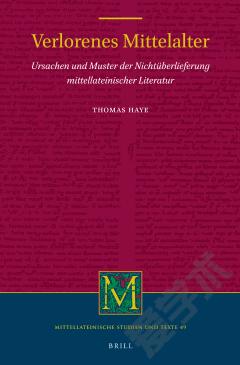Narrative, Authority and Power: The Medieval Exemplum and the Chaucerian Tradition
For Scanlon authority and power occur in opposition. His subject is the exemplum, which he defines as "a narrative enactment of cultural authority" (p. 34). He traces the inter-related histories of auctoritas and the exemplum from classical times up to Chaucer, who provides the focus of his study. Just as the church had earlier appropriated the exemplum form from its pagan predecessors in order to establish its own auctoritas, Scanlon argues, Chaucer and other contemporary writers appropriated the exemplum anew in order to assert the authority of vernacular poetry in face of that of the church. His reading of Chaucer, emphasizing the poet's engagement with the problem of his own authority, is detailed and complex, and needs to be examined to be appreciated. Scanlon treats Gower in his second to last chapter (pp. 245-97), before turning to his conclusion on "The Chaucerian Tradition in the fifteenth century." He has less to say about Gower's use of the exemplum form precisely than he does about the theoretical issues that the form raises. He describes CA as "a sustained meditation on the contingencies of cultural authority" (p. 267). He attributes to Gower just as much self-consciousness about his role as he does to Chaucer, but describes him as having a very different agenda: more explicitly anticlerical, Gower places lay political authority (rather than the poet's) over that of the church, while also arguing for the interdependence of the prince and poetry. In Scanlon's words, "To the extent moral disorder characterizes the Church, it demonstrates the need for the sort of order provided by the king. But to the extent such disorder also affects kingship, it demonstrates the indispensability of the moral correction that comes from the poet" (p. 249). Scanlon finds a point by point development of this argument in his examination of CA. In the Prologue and Books 1 and 2, "Gower is expecially concerned to demonstrate the necessity of lay authority by means of anti-clerical critique. But he is just as concerned to demonstrate the irreducibly double nature of such authority, the interdependence between poet and prince, and the extent to which the prince's authority is discursively constructed" (pp. 249-50). The Prologue juxtaposes the moral bankruptcy of the Church with Gower's call for a "new Arion," both set within his presentation of his poem to the king. Book 1 introduces Genius, who embodies Gower's "middel weie," hovering "uncertainly between the clerical and the lay" (p. 256). Key tales in Books 1 and 2 explore the discursive nature of all authority. The tale of Boniface sets the pope â who usurps not only the papacy but also (literally) the voice of God and also temporal authority â against the virtuous king who restores order to the church. The tale of Constantine with which that tale is paired not only "foregrounds Christianity's dependence on material reality" (p. 266) in its conclusion, but also defines an important aspect of kingship in Constantine's conversion. When Constantine beholds the mothers and their children, "it is as if monarchical power, in its supreme amorality, stimulates from its possessor an irresistable need for moral order," demonstrating "monarchy's inherently self-regulating character, the paradoxical but inevitable logic whereby absolute prerogative produces its own self-generated restraint" (p. 265). In Books 3 through 6, Gower distinguishes this view of monarchy from the chivalric view of lay authority with a critique of the values embodied in romance, focusing particularly on the delusions of fin' amors in tales such as "Canace and Machaire," "Pyramus and Thisbe," and "Orestes," while offering a "demystified" view of the claims of chivalry in his discussion of "Prouesse" in Book 4. In the final tale of Book 6, he offers another version of the self-regulating nature of the monarch's power. Alexander's arbitrary act of shoving Nectanabus off the tower ironically fulfills the prophecy that provokes it; it also corrects the arbitrariness of the act by which Alexander was originally conceived. Divine authority works obliquely through Alexander's action. "By pushing the oblique relation between divine authority and temporal power to the extreme, Gower is able to authorize lay power precisely in its transgressive coerciveness. For it is precisely the self-regulating structure of that transgressiveness that Gower takes as divine authorization. Lay power is by its very nature contingent and incomplete. But for Gower its continual reassertions of it contingency and incompletion produce a self-regulation that is continually able to point beyond that incompletion" (pp. 281-82). This tale opens the way for Book 7, which emphasizes the need for secular rule â "Monarchy inevitably produces social order, because it is the only form order can take" (p. 291) â and the unbreakable link between power and self-restraint. One form of that self-restraint, of course, is chastity, the last of the kingly virtues that Gower discusses, which replaces fin' amors with an ideal of behavior that recalls that imposed on the clergy and thus constitutes a sanctification of lay authority. Gower's engagement with political issues, he concludes, was no less important to the poets that followed in the next century than was Chaucer's reappropriation of the clerical tradition. There is more. Scanlon has a great deal to say about many other issues both theoretical and practical that come up along the way (see, for instance, his speculation on Derrida's debt to St. Paul on p. 51). But his discussion is also firmly grounded in some of the most traditional questions of Chaucer and Gower scholarship. In one sense, his reading of Gower puts him in a long line of critics who have emphasized Gower's political views, but he brings an entirely different perspective from earlier commentators. And while he attempts to overcome the antithesis between morality and poetry that lies, as he observes, at the base of most comparisons between Chaucer and Gower, he also sees important differences between these two poets, which he defines in a new and very different light. This is a challenging work, and well worth close study. [PN. Copyright The John Gower Society. JGN14.2]
{{comment.content}}








 京公网安备 11010802027623号
京公网安备 11010802027623号